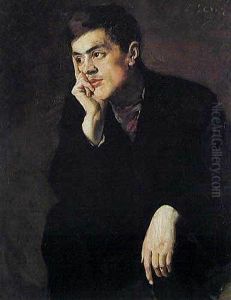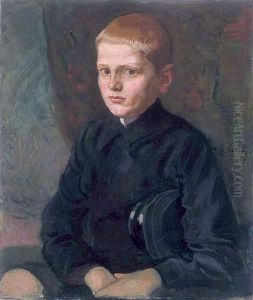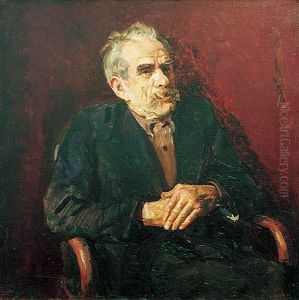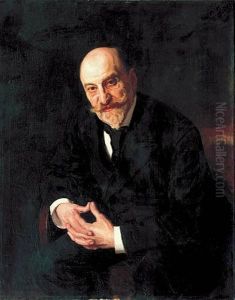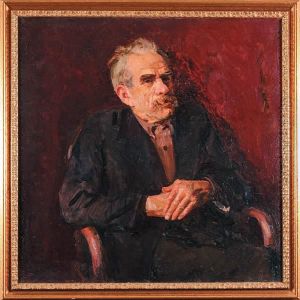Stanislas Lentz Paintings
Stanislas Lentz was a Polish painter born on September 23, 1861, in Drohobycz, which was part of the Austro-Hungarian Empire during his lifetime and is now in Ukraine. He was primarily known for his portraits and genre scenes. Lentz showed an early aptitude for drawing and painting, which led him to pursue formal education in the arts.
He began his studies at the Kraków School of Fine Arts, where he was a student of Jan Matejko, one of the most revered Polish historical painters. After honing his skills in Kraków, Lentz continued his education abroad, which was a common practice for many artists of that era seeking to expand their artistic perspectives. He traveled to Munich, a significant center for art education and a hub for artists from across Europe. There, he further developed his technique and absorbed influences from different art movements.
Upon completing his studies, Lentz returned to his homeland and became an active participant in the Polish art scene. His works often reflected his interest in the human condition, capturing the daily lives and struggles of the people around him. Lentz was particularly adept at portraiture, where his skill in rendering the human face and expression earned him many commissions from the social elite of his time. Despite his success with portraits, he did not limit himself to this genre and produced a variety of works, including landscapes and still lifes.
Lentz's painting style was characterized by a realistic approach, with a keen eye for detail and a subtle use of color. He was influenced by the realism of the 19th century but also incorporated elements of impressionism into his work, particularly in his use of light and color. Throughout his career, Lentz participated in numerous exhibitions and received accolades for his contributions to Polish art.
During World War II, the region where Lentz lived underwent significant turmoil, and the art community faced many challenges. Despite these difficulties, Lentz continued to work until his death on April 5, 1946. His legacy lives on through his art, which provides a valuable insight into the cultural and social landscape of Poland and the Austro-Hungarian Empire at the turn of the 20th century.
